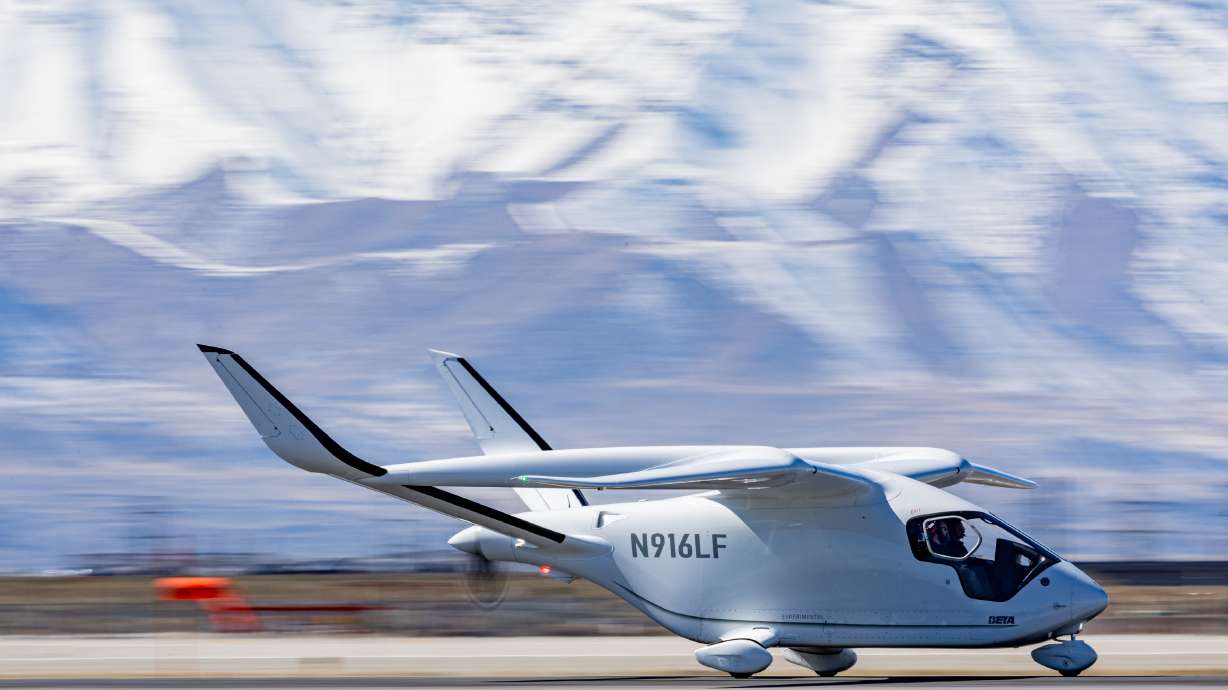Estimated read time: 3-4 minutes
- Beta Technologies completed its first passenger flight of an all-electric aircraft.
- The flight signals progress toward electric air travel in Utah, with the company in partnership with Utah-based aerospace and defense company 47G.
- The 45-minute flight was cost-effective, highlighting potential future benefits for Utah's air mobility.
SALT LAKE CITY — On-demand, electric air travel is inching closer and closer to becoming a reality in Utah after Beta Technologies landed a passenger-filled prototype last week at John F. Kennedy International Airport in New York City.
Beta Technologies is a Vermont-based electric aircraft and charging manufacturer that signed a memorandum of understanding with Utah-based aerospace and defense company 47G in January in a landmark deal that opened the door for electric flight in Utah.
In May 2024, 47G announced the launch of Project Alta, technically known as the Air Logistics Transportation Alliance.
The project, which aims to establish an "advanced air mobility system" for the state, is a collaboration between 47G, the Utah Governor's Office, the Utah Department of Transportation, the Utah Inland Port Authority and other stakeholders.
However, Beta Technologies' latest feat is a significant step toward bringing on-demand air travel to Utah, as the demonstration flight marked the first time its electric aircraft called Alia was operated with passengers on board.
The electric aircraft transported a pilot and four passengers — including Republic Airways President Matt Koscal and Blade Air Mobility CEO Rob Wiesenthal — from Long Island to New York in a 45-minute flight.
"Flying our electric aircraft into one of the world's busiest airports, with passengers, proves advanced air mobility is not some future concept, it's here," Kyle Clark, founder and CEO of BETA Technologies, said in a statement. "Today's flight is about more than technology; it's about innovation and connecting communities in safer, quieter, and more efficient ways.
"After years of rigorous safety testing in all types of environments, we're proud to stand here with the Port Authority and the city of New York to demonstrate exactly how this aircraft can serve cities by easing congestion, reducing emissions, and increasing accessibility."
According to Beta Technologies, the energy cost for the 45-minute flight was just $7, compared with the estimated $160 in fuel costs for a helicopter making the same trip. The Alia flew at 135 knots, operating under a market survey ticket issued by the FAA to the company, which allowed it to operate outside its primary test area.
In March, Beta Technologies visited Utah and conducted six days of demonstration flights across the state to showcase its electric Alia aircraft.
"Utah has demonstrated forward-thinking leadership and a strong commitment to investing in advanced air mobility," Clark said during the company's Utah trip. "Utah is way ahead of the game, making the right investments early and providing the necessary support to stand up an air mobility ecosystem that can drive real impact. This week's flights will demonstrate the benefits of this low-cost, quiet and safe mode of transport for the state of Utah and beyond."
Cargo flight planning in Utah will start by reviewing infrastructure within the state's municipal and regional airports in partnership with the Utah Department of Transportation, said Aaron Starks, president and CEO of 47G, when the memorandum of understanding was signed.
Salt Lake City, Provo and Ogden are "high" on the list of areas to debut advanced air mobility. At the same time, pilots could be trained at institutions like Utah State University, Southern Utah University and Utah Valley University, he said.
Passenger flights would begin sometime after cargo, possibly connecting Logan and Salt Lake City within 20 minutes, or Salt Lake City and Moab within 40 minutes. Ryan Starks, executive director of the Utah Governor's Office of Economic Opportunity, said the technology offers the potential to expand mobility options across the state, reducing commute times without compromising air quality.










